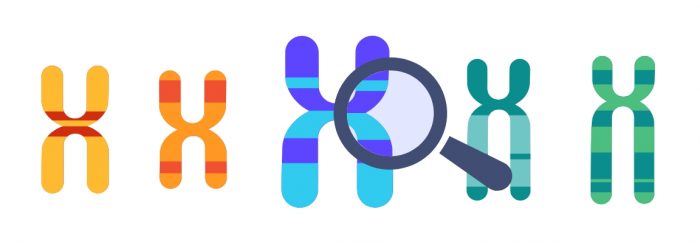The first thing to understand a rare disease is… to know what we call a rare disease. A disease is defined as rare according to its prevalence in society. And depending on the society, the prevalence requirements change. Or they don’t even exist. The World Health Organisation defines a rare disease as a disease that affects one or fewer individuals in every 2,000 people. Although individually rare, collectively there are more than 300 million people worldwide who carry a rare disease.
The 6,000-10,000 registered rare diseases affect 3-8% of the world’s population. Why is the number of diseases so large? Precisely because the definition changes depending on the organisation or region where you ask, and depending on the source the number varies. In the United States it must be less than 200,000 affected in the whole country, in Japan it must be less than 50,000 affected in the whole country, and in the United Kingdom it takes one in every 2,000 people. In 2015 there were 296 different definitions from 1,109 different organisations.
Another term sometimes used incorrectly as a synonym is “orphan disease“, those diseases where the pharmaceutical industry does not invest. Often these are rare diseases, but others are pathologies with high prevalence in population groups that could not afford the treatments. So the pharmaceutical industry ignores them.
The low frequency of these diseases is a problem in itself. When in doubt, these patients will be diagnosed with other pathologies with similar symptoms but higher incidence in the population, leading to incorrect treatments. Some will never be correctly diagnosed. In the UK, on average, a patient affected by a rare disease will go through 3 incorrect diagnoses, visit 5 different doctors and take 4 years before getting a definitive diagnosis. And most of them start as early as childhood, marking the life of both the patient and their family.
The search for the right diagnosis and the various incorrect treatments not only affect the sufferers, but also cause additional costs in terms of time and money for the health services. And then less than 3% have adequate pharmacological treatment. And if they do, they are more expensive. It has been calculated that the cost of a patient having to use orphan drugs is approximately 4.8 times higher than that of a conventional patient.

Genes always rule
With 40-80% of these diseases having a genetic basis, and some 4,000 hereditary conditions among them, they make up the majority of recorded rare diseases. Monogenic diseases are so called because the cause of the disease is an alteration in a single gene. They are single-gene diseases. We call a gene the basic unit of heredity, a particle of genetic material, a specific DNA sequence, which carries information for a specific protein or function.
Brief aside: chromosomes in humans are found in duplicate, one copy from the father and one from the mother, so we also have two copies of each gene. And each variant, each alternative, of the same gene is called an allele. If a person has the two same alleles of the gene, they are homozygous for that gene. If they have two different alleles, they are heterozygous for that gene. And sometimes some of the alleles are pathological. If you have the disease with only one pathological allele, it is a dominant disease. If you need both pathological alleles, because a healthy allele can compensate for the “negative” allele, it is a recessive disease.
For example, if a gene were a specific make of car, the alleles would be all known cars of that make. Including those with five wheels, no engine, or a goat behind the wheel. They are still that car, but you’d rather not buy it.
Rare diseases are also the majority of congenital anomalies (alterations that occur in the individual before birth). Within this group, almost 70% of the diseases affect the nervous system. The usual symptoms of these diseases are alterations in neuronal development and neurodegeneration. They result in chronic, progressive and debilitating diseases with high mortality.
In addition, few diseased individuals also means little information about the disease. Even with the correct diagnosis, the lack of knowledge about the problem limits the answers that can be given. There are not enough patients to study to draw conclusive results.
The key to effective and rapid diagnosis right now (except for rare, non-genetic diseases, such as those caused by parasites) would be found in the application of massive sequencing technologies (NGS). This would also allow for the prevention of hereditary diseases. Interestingly, one positive thing that has emerged is that the NGS study of patients with rare diseases has uncovered new genes and functions that were previously unknown. And its results allow for personalised and targeted medicine that is complemented by knowing the cause of the disease.
Examples make it easier to understand
As human beings are as curious as they are morbid, let us look at some examples of rare diseases that exist and are registered.
- Gaucher’s disease: One of the oldest recorded, in 1882, by the French doctor Philippe Gaucher. During an autopsy of a patient, he discovered that he had an enlarged spleen and enlarged spleen cells, one of the characteristic symptoms of the disease. The cause is an autosomal recessive mutation in the GBA gene, which produces an enzyme called glucocerebrosidase. It has several functions, the main one being to break down glucocerebroside, a component of the cell membrane, into glucose and fat. Without the enzyme, glucocerebroside accumulates in cells, especially macrophages, and ends up damaging organs. Ninety-five per cent of the time it is called type 1, which does not affect the brain. Type 3 affects the brain gradually, but not from birth. And type 2 affects the brain very severely from birth. Lethally very severe.
- Ribose-5-phosphate isomerase deficiency: The second rarest genetic disease in recorded history, after Fields disease (with only two patients, identical twins). In this deficiency, only 4 patients have been diagnosed with the disease since 1984. In one of the patients, they found that the gene that encodes the protein, RPIA, had a non-functional allele and another that produced a partially active enzyme. Interestingly, the partially functional allele was able to produce enough active protein depending on the type of cell it was, with both affected and normal cells. Patients showed progressive damage to the white matter of the brain and accumulation of two compounds, ribitol and D-arabitol.
- Bardet-Biedl syndrome: Another autosomal recessive disease, this is a disease where the cell cilia (small cylinders on the outer membrane of some cells) are altered. Up to 14 genes, called BBS genes, are associated with the disease. The interesting thing is that, being recessive, patients can have the disease, even if all the genes have at least one healthy allele. Why? Patients have been reported to have one pathological and one healthy allele of BBS1. The same for the BBS10 gene: one healthy and one pathological. Under normal conditions, there would be no disease. But in this case, the combination of two mutated alleles of different genes was capable of causing pathology. This is a case of digenic inheritance: the disease is caused by mutation in two different genes, even though they maintain a healthy allele.
Having a rare disease is rare, but if you want to be on the safe side and get a few of them, you can buy the tellmeGen DNA kit and see how special you are.



